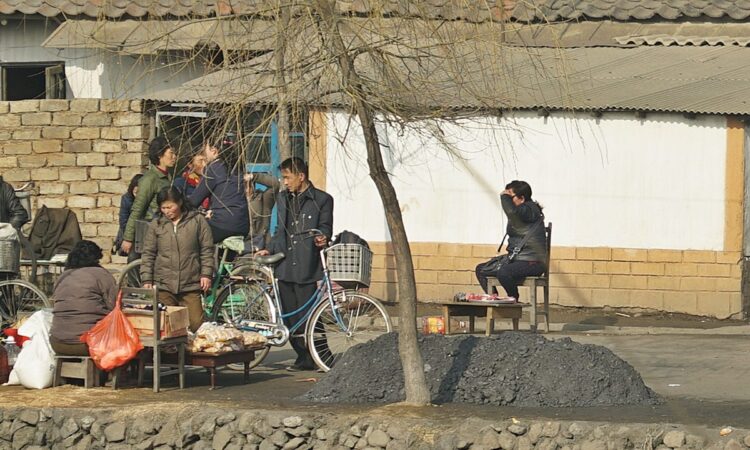
North Korea’s yuan exchange rate is climbing sharply, driven by increased demand for the Chinese currency due to North Korea’s “regional development 20×10 policy.”
According to Daily NK’s regular survey of market prices in North Korea, the market KPW-RMB exchange rate was KPW 1,550 to the yuan in Pyongyang as of Mar. 31. This was 14% higher than the previous survey two weeks earlier when the yuan traded at KPW 1,360 in the North Korean capital.
The yuan strengthened by similar amounts in other regions as well, with the highest spike being in Hyesan, Yanggang Province.
As of Mar. 31, the yuan was trading at KPW 1,620 in Hyesan, a 16.7% increase from the previous survey (KPW 1,380).
This is the first time the yuan has climbed so sharply since December 2022, when the rate skyrocketed due to spiking imports — which had slumped due to the COVID-19 border closure — and rising expectations of trade.
After holding steady in the KPW 1,200 range for over a year, the yuan exchange rate climbed past KPW 1,400 in early February, soon after North Korean leader Kim Jong Un announced the regional development 20×10 policy, and recently surpassed KPW 1,600.
In fact, this is the first time the yuan has climbed past KPW 1,600 since Daily NK began surveying market exchange rates in 2015.
The reason for the steep climb appears to be a spike in trading company activity nationwide due to the regional development 20×10 policy.
Speaking on condition of anonymity, a source in North Korea told Daily NK recently that the country’s 13 provinces are “competing to import construction materials and racing to build factories.” He said provincial areas have much more demand for yuan than dollars “because the construction materials and machinery the factories need come from China.”
The yuan isn’t the only currency on the rise
The dollar has also strengthened in North Korea, though not as sharply as the yuan.
The market KPW-RMB exchange rate was KPW 8,720 in Pyongyang as of March 31, 2.6% higher than in the previous survey on March 17.
In Sinuiju and Hyesan, the dollar was likewise trading at around KPW 8,700, 1.5 to 2% higher than in the previous survey.
This is the first time that the market rate for the greenback has climbed past KPW 8,700 since 2013.
The current values of the dollar and yuan are higher than they were before North Korea closed the border during the COVID-19 pandemic.
Even if exchange rates naturally climb due to rising demand for foreign exchange as regional trade increases, North Korea is unlikely to welcome the sharp spike, given that it imports more than it exports.
Lim Song, a researcher with the Bank of Korea’s Economic Research Institute, said because North Korea traditionally imports much more than it exports, “a continuous climb in the exchange rate would be unfavorable.” However, he said observers must “wait to see if the North Korean authorities directly intervene to control the rising exchange rate.”
Translated by David Black. Edited by Robert Lauler.
Daily NK works with a network of sources living in North Korea, China, and elsewhere. Their identities remain anonymous for security reasons. For more information about Daily NK’s network of reporting partners and information-gathering activities, please visit our FAQ page here.
Please send any comments or questions about this article to dailynkenglish@uni-media.net.


